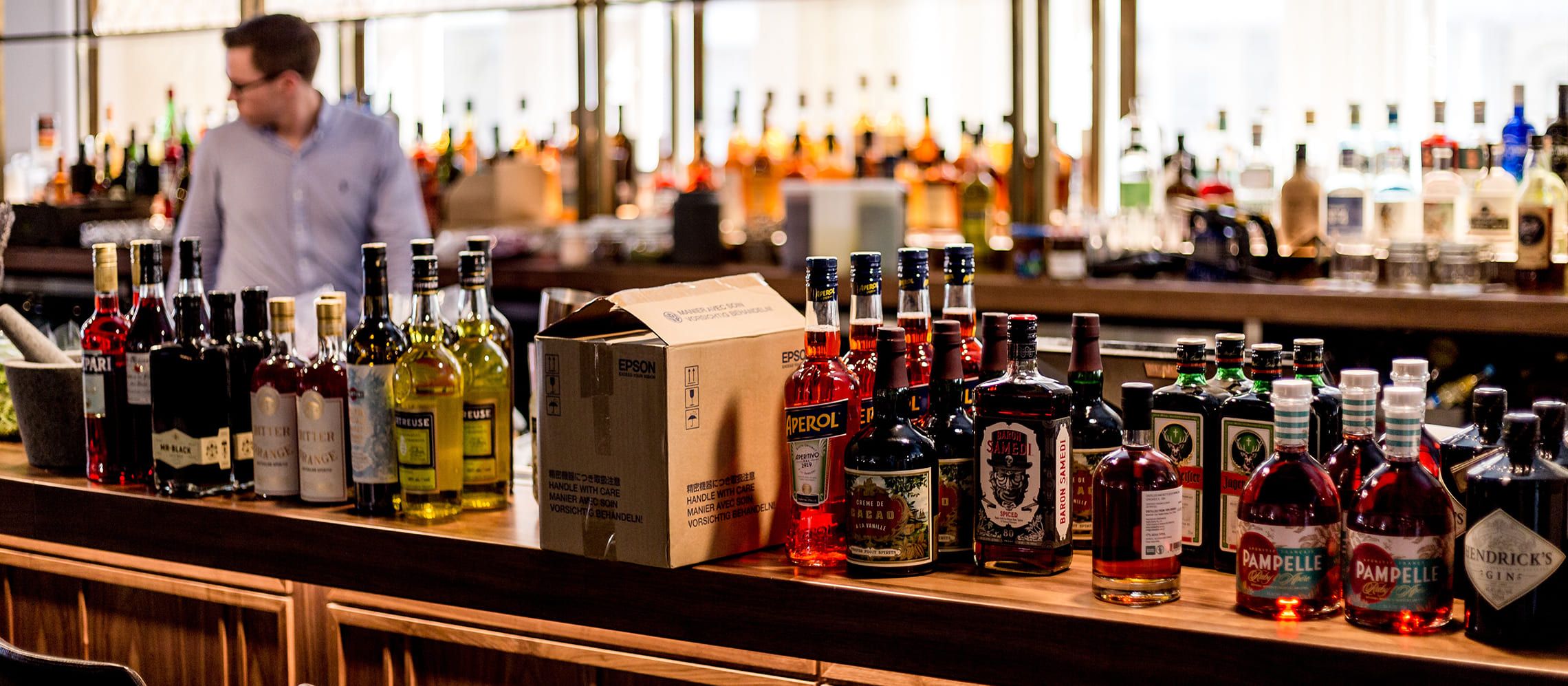Super Early Deadline
30 November 2025
Judging
Date
24 & 25 March 2026
Winners Announcement
22 April 2026
30 November 2025
24 & 25 March 2026
22 April 2026

The UK spirits market is a very strong one, and quite a hard one to get into. Brands from across the world are trying to find their way into the UK market through importers and distributors. Because of this, distributors get hundreds of brands, suppliers, and distilleries pitching to them to get their spirits added to the distributor’s portfolio.
So when adding a new product to their portfolio, distributors are usually very picky as they want impeccable spirits to satisfy their accounts and also keep their reputation in the market - plus, of course, they want something that will sell.
If you’re looking to enter the UK spirits market, and are wondering how to get your spirits added to a distributor’s portfolio, we have it all laid out for you right here.
One of the first things the distributor will pay attention to is the quality, price, and packaging of your spirits. If your spirits are of low quality and high price, then it’s most likely that the distributor might not pick it up. However, if your product is of good quality, and is priced at a range which justifies the quality and has space for the distributor can play around with, then they will definitely be keen to add those spirits to their portfolio.
Packaging also plays a huge part in this. Your quality and price could be up to the mark, but if the packaging isn’t attractive and doesn’t connect with the person looking at it, then the distributor will most likely not pick your product. Restaurants, bars, and retail stores all look at the packaging of the product before adding it to their shelves and menus. This is because, on the racks of retail stores, consumers pick their spirits based on what they see, and if the packaging isn’t what they like, then they aren’t going to pick that bottle. Similarly, with restaurants and bars, the bottles are displayed on their bar shelves, so when consumers are ordering their drinks, they are inclined to look at the bottle they’re being served from. In the end, distributors like to have spirits on their portfolio that sell, and if your quality, price, and packaging aren’t going to end up selling, then the distributor will easily overlook it.
A good tip would be to enter your spirits into spirits competitions. Wondering why to get into a spirits competition? Entering your spirits into spirits competitions will get your products assessed by industry experts who will know what price will go with the quality of the product and how your packaging should be. Entering competitions like International Wine and Spirits Competition and London Spirits Competition will also help you figure out where your spirits stand in terms of quality, value, and packaging. This way you’ll know where you need to improve, and the type of distributors to pitch to so your spirits can be added to a distributor’s portfolio.
Check out these 8 important tips to stay close to your distributor.
Before adding new spirits to their portfolio, distributors will always check if they have that kind of product already or not. So, for example, if you have a value tequila - and a certain distributor already has a value tequila in their portfolio, then they’re less likely to pick your product. However, if you find that the distributor doesn’t have a barrel-aged whiskey in their portfolio, and that’s what you’re offering, then your product is likely to be picked by the distributor to add to their portfolio.
As a supplier/producer, you need to understand when a distributor picks your spirits to add to their portfolio, they’ll most likely want to start with low numbers, like one case, or two. Of course, this is because as this point they don’t really know if your product is going to sell and settle in their accounts or not. They don’t know if they’re going to get repeat orders for the same, so to test it out, they’ll most likely order one case or two cases in the beginning.
Now we know that this can be frustrating for you, but if you show the distributor that you are flexible in the number of cases they need, and your products work in the distributor’s accounts - then you’re most likely to get a repeat order. However, if you don’t take in account the distributor’s risk of buying your spirits, and force a large number of cases on them - then no matter how good your spirits are, the distributor wouldn’t want to have your spirits on their portfolio.
Check out how distilleries can pitch their spirits into UK bars & restaurants.
Distributors also tend to focus a lot on the amount of support the distillery/supplier is ready to offer in the market. If the distributor has to do all the work, then they aren’t going to be keen to add your spirits to their portfolio. Distributors like suppliers to make their job easier, and if you as a supplier offers the distributor support in the market, then they will be more than happy to have your spirits on their portfolio. So make sure you’re helping them out in the market. If your spirits are at a retail store, go to the stores and see the shelf display, try to get some merchandising done and market your spirits to help the distributor out. Distributors will always give preference to suppliers and distilleries who are willing to go all-in with the programming of their spirits.
Show your spirits where it matters. Get your products tasted by top bartenders, buyers and experts at the London Competitions — enter now.